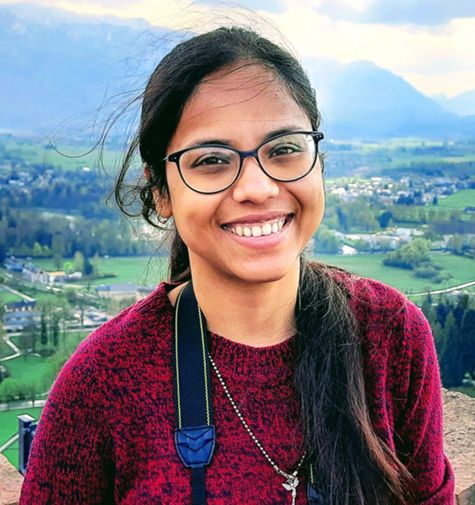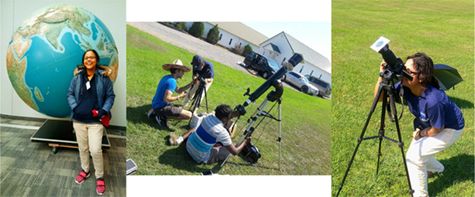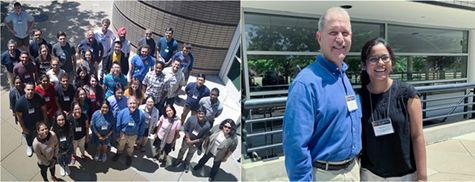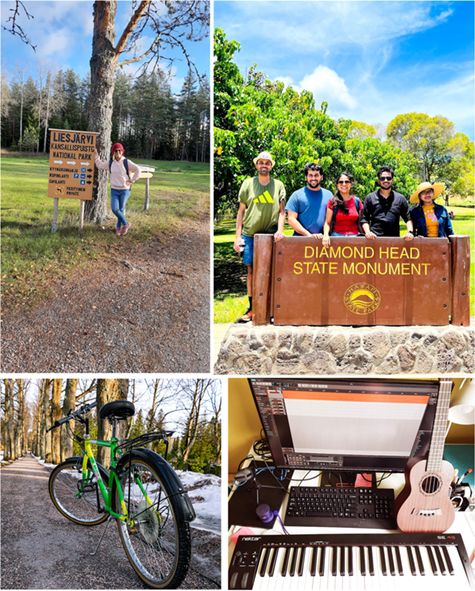Early Career Scientist Spotlight
Dr. Sanchita Pal (she/her/hers)
Space Scientist
Heliospheric Physics Laboratory (672)
Did you always know that you wanted to be a Space Scientist?
I was always very curious about our planet, solar system, and the Universe. My childhood dream was to be a NASA scientist one day...
If I started to answer this question as above, I would be telling a big lie! I am from a small town in India, where, in my time, one could only see the night sky through a telescope. The colorful pictures of stars and planets in our school textbooks weren’t enough to motivate me to know more about space and to dream about being a space scientist. Back then, I never knew that I would pursue a career in space science, and particularly one exploring the ruler of our solar system—the Sun.
After high school, I started studying Electronics Engineering. In my MTech, I opted for a specialization in Space Science. This specialization was on space-based electronic instruments and technologies. There, I worked on a project that first introduced me to space-based navigation system anomalies due to disturbances in atmospheric electron content. In my Master’s thesis, I explored how space weather disturbances driven by the Sun and solar storms can influence navigation systems like GPS. This was the first time I started to grow an interest in space weather – what is its source? What are its drivers? And how do these drivers impact humankind? These motivations led me to pursue my career in space science.
What science questions do you investigate?
The primary goal of my research is to explore solar eruptions and their contributions to space weather. Solar eruptions can eject large amounts of magnetized solar mass and energy that may threaten the lives of astronauts and disrupt space-based instruments, as well as communication and navigation satellites. My research investigates the internal structure of such solar eruptions, their properties responsible for causing space weather hazards, their propagation out from the source, their interaction with surroundings and planetary atmosphere and their predicted impacts on planets.
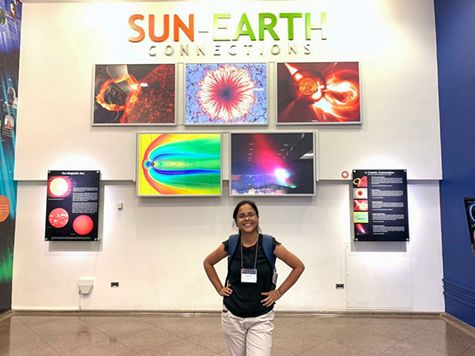
Credit: Talwinder Singh
Tell us about one project that has been particularly impactful in your field.
Although this particular project started in my Ph.D., I eventually figured out many unexplored areas and am still involved in that project. This project involves investigating the interactions of solar eruptions with their surroundings in the heliosphere-- a cavity created by the Sun in its surrounding interstellar medium.
The solar wind continuously flows out from the Sun and keeps on filling up the heliosphere with the magnetized solar plasma. Thus, once massive solar ejecta (erupted magnetized solar mass) are launched in the heliosphere, they interact with the ambient plasma. This leads to the solar ejecta eroding their material and may significantly change their planetary impacts. The erosion of solar eruptions is not widely studied. My project quantifies erosion and finds its dependency on different factors, its effects on the ejecta’s structure and nature, and its impact on planets. The research outcomes that we have seen related to this project till now are well accepted in our community, motivating me to continue my research on this particular project.
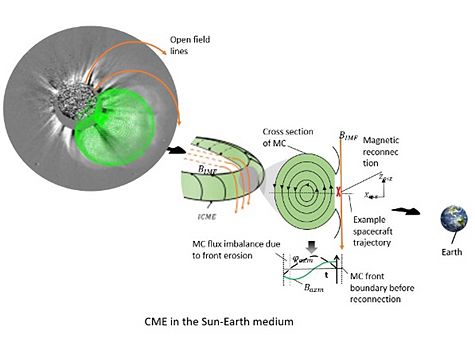
Credit: Pal et al. 2020, GRL
What is one of your favorite moments in your career so far?
It was the afternoon of April 13, 2017, when I received an email from the scientific secretary of the Scientific Committee on Solar-Terrestrial Physics (SCOSTEP) Visiting Scholarship program congratulating me on accepting my scholarship. It allowed me to visit NASA GSFC for the first time for a duration of 3 months. I was in the second year of my Ph.D. and was very happy with my achievement. After this, many memorable moments were created, but this was my first achievement in my Ph.D., so this will be always at the top of everything.
Credit: Claudia Medeiros, Ankush Bhaskar
What do you enjoy the most about your job?
The opportunity to present my research outcomes on global platforms. I think one of the most important aspects of a researcher’s job is to let the community know about their findings. I enjoy attending conferences, meeting people from my community, presenting my views on my field to them, and listening to their opinions. I enjoy conversations about controversial thoughts, different perspectives on the same topic, and other science discussions.
Alongside the above, I enjoy the freedom and flexibility that my job allows me to pursue my interests in matters other than my research.
Credit: Nicholas Gross, Ritika Joshi
What early career advice do you have for those looking to do what you do?
I advise that hard work is necessary to achieve success, but networking is very important. It certainly expedites the process of achieving goals. With hard work, tireless effort, and a quest to solve a problem, one can train themselves with the primary tools and formulate an idea to proceed with their research. Networking with the community, discussing with eminent scientists, young scientists, and even undergrads, however, can help in getting new ideas and ways to solve challenging research problems. Here I would like to mention that to help the newbies in my research field, I have prepared lists of research-related materials, data, and much more on my website. Take a look if you are interested.
What do you like to do in your free time?
I love to sing and play musical instruments. I enjoy improvising songs with additional background music played on ukulele and midi piano. Sometimes to get motivation for such work, I post them on my YouTube channel, Hobby box, and see people’s reactions to those videos. It is fun, makes me happy, and builds confidence in myself.
I love trekking and cycling and spend time discussing unusual topics on several existing social and economic crises. Sometimes, I spend time cooking unique Indian and continental dishes and hanging out with collogues and old friends to recollect memories and build new ones.
Credit: Shibashish Khatua, Sanchita Pal
Biography
Home Town:
Midnapore, India
Undergraduate Degree:
B.Tech, West Bengal University of Technology, Kolkata, India
Post-graduate Degrees:
M.Tech, Institute of Radio physics and Electronics, University of Calcutta, Kolkata, India
Ph.D. in Space Physics, Indian Institute of Science Education and Research (IISER), Kolkata, India
